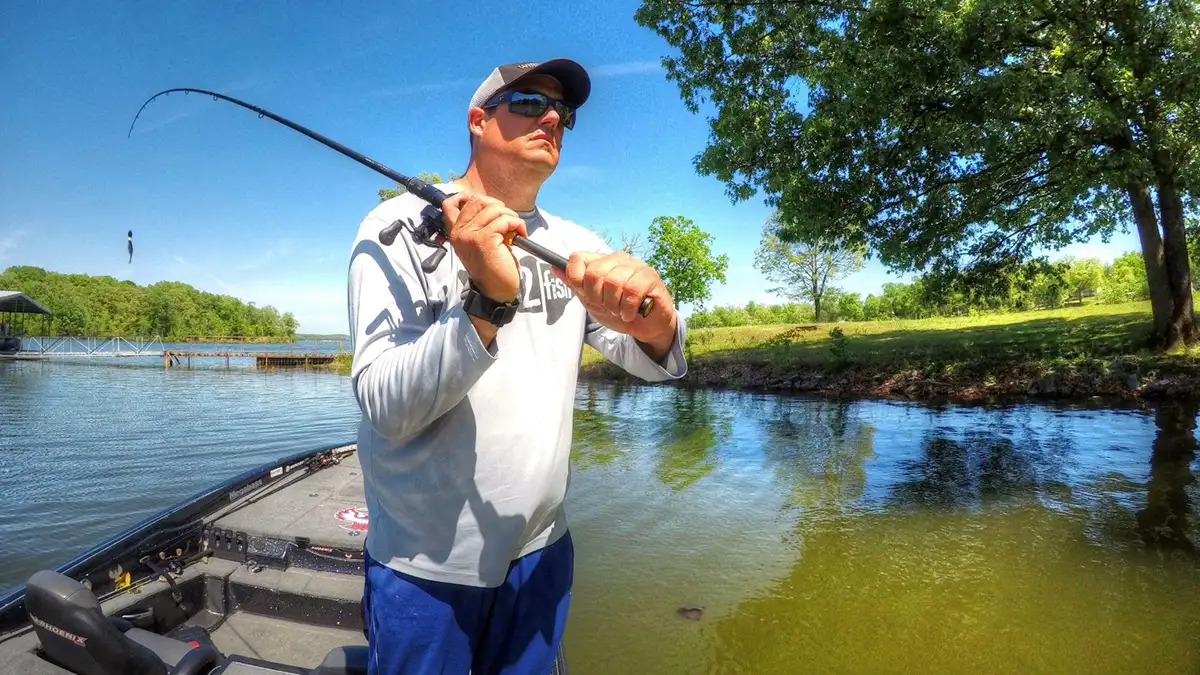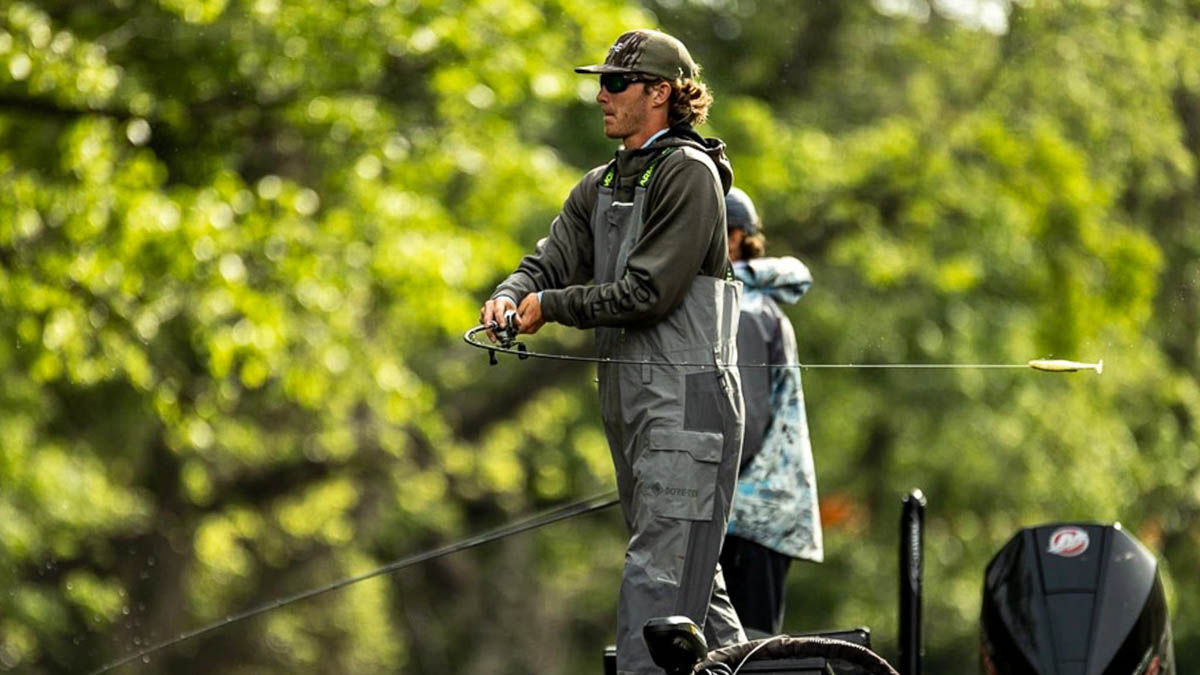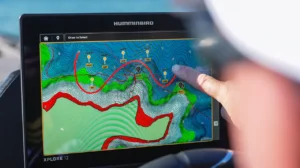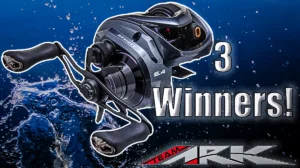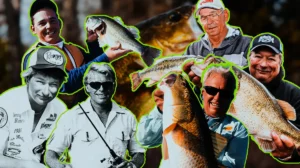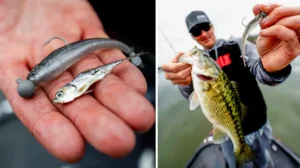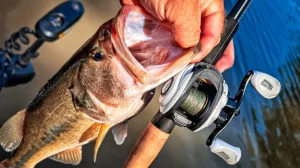Casting quite possibly holds the key to catching fish, after all you will not catch many fish if you never get your lure or bait in front of a possible fish. Sometimes that can be a short distance, but more often than not, because fish can sense our presence and hear our electronics pinging, we need to put a lot more distance between us and them to have a chance in fooling them. So every angler should learn how to improve casting distance so you can cast farther when fishing.
A myriad of factors impact casting and many of them are simply combating the friction of the line coming off the fishing reel and going through the fishing rod guides. Everything your line encounters on the way off the spool of a reel inhibits distance. So the more your line slaps on a guide or the less mass pulling it away from the spool, the less distance you will see on your casts. But many of these forces go unrecognized by even the savviest of anglers, leaving many wondering how to cast their lures farther.
These key factors have the most impact on casting distance:
- Rod choice
- Line choice
- Lure weight
- Wind
Covering each of these factors will provide you with all the information to get your baits a lot farther out on a cast.
FISHING ROD ACTION AND POWER AFFECT DISTANCE
Your fishing rod choice determines how far you can cast a lure most of the time. Too stiff of a rod action or heavy a power combined with too light of a lure and your casting distance will be severely limited. So if casting distances is a main focus, anglers should choose rods that load well.
Load on a rod refers to how much the rod flexes or bends on the back cast. This flexing creates tension much like drawing the string on a bow and arrow. The more load the lure causes on the back cast, the more propulsion the rod can generate on the forward cast. Ultralight to medium rods all load very well.
You still need to match your lures and line to your rod. In other words I do not want to cast a 3/4-ounce lure with 20-pound line on an ultralight rod as it will like snap in the back cast because it is beyond that rod’s rated load. Most rods will have a rating on them list the pound of line range and lure weight range that rod can handle on a back cast. If you exceed those ranges the rod may flex beyond it’s capacity on the back cast load and splinter or break completely.
And if I try to throw a 1/32-ounce lure on a medium rod, I will not get near the distance as I will with an ultralight rod. That rod loads with much less weight, whereas a medium-power rod with a mod-fast to fast action only loads when the weights get into the 1/4 or 3/8-ounce range.
LINE CHOICE IMPACTS CASTING DISTANCE
The simple thing to remember—lighter lines will cast farther. You sacrifice some power and abrasion resistance on a fight with a bigger fish, but, generally speaking, the lighter your line, the farther you can cast a lure or bait. Guys fishing with ultralight rods often use 2- to 4-pound line. They will take a little longer on a fight to be able to cast a small lure much farther out.
LURE WEIGHT INCREASES DISTANCE
Much like line, although conversely proportionate, additional lure weight adds to your distance. A 1/2-ounce lure will cast farther than a 1/8-ounce lure on the same line. The combination of smaller diameter in line reduces friction on the reel spool and the guides on the rod and the added weight of the lure rocket propels the lure on a distant destination.
Again the rod action and power should match up to the lure weight. Don’t try to put a 1/2-ounce lure on a light action rod and wonder why the rod broke on the back cast when you wound up a humdinger of a cast to try to hit the far side of the lake. But generally speaking, if you go up in lure weight with the line size staying the same, you can get more distance if the rod can handle it.
THE WIND HINDERS DISTANCE FOR MULTIPLE REASONS
The wind generates added, unwanted resistance, and resistance minimizes distance in casting performance. If you’re lure is too light, it’s going to stand up in the wind more. If your lure has a lot of things hanging off of it or is made of light materials like spinnerbaits and jerkbaits, they can get hung up and “tumble” in the wind, which removes some of the inertia generated to propel your baits farther.
Some ways to combat the wind include dropping down in line diameter (size), and going up in not only lure weight, but also choosing more streamlined lures. A 1/2-ounce lipless crankbait will cast way farther than a 3/8-ounce jerkbait in the wind. And the same lure on 15-pound line will cast dramatically farther on 10-pound line in the wind. Because bigger diameter lines catch wind more than smaller diameter lines do.
CASTING DISTANCE IS RELATIVE
Far relates to anglers differently. Most of the time, we do not need to cast as far as humanly possible. Most of the time, we just want to create enough distance between us and the fish that we are not putting them on guard before we’ve had a chance to trick them with our offerings.
I often trout fish and fish for panfish with 2-pound line and have landed fish up to 11 pounds on that line. But I do it so that I can cast the small lures I use for trout, bluegills and shellcrackers far enough that I don’t spook them before I cast to them.
So drop down in line, go up in lure weight and go to lighter power, slower action when you need more distance.


